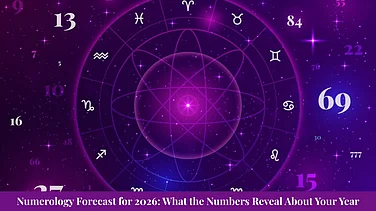In India, people in the north and west celebrate Navratri, but in Bengal and other eastern states, Durga Puja is the main event. These two celebrations, though seemingly similar, Navratri and Durga Puja are two of the most important Hindu festivals that honour Goddess Durga and celebrate her power as a woman and her win over evil. In terms of cultural practices, rituals, regional importance, and historical context, the two festivals are very different, even though they are worshipping the same god. Knowing these differences can help people to understand the wide range and depth of Hindu ideas and rituals as well.
Duration and Timing:
Navratri 2024:
The word ‘Navratri’ means ‘Nine Nights.’ The festival lasts for ten days and nine nights in a row; that’s why it's called Navratri. Navratri happens four times a year, but Sharad Navratri, which comes in the Hindu month of Ashwin (September–October), is the most well-known and widely celebrated. The tenth day of Navratri is known as Dussehra or Vijayadashami. On this day the festival ends and also that day is marked as the victory of good over evil.
Durga Puja 2024:
The Durga Puja festival, mostly observed in the eastern regions of India, namely in West Bengal, Assam, Tripura, and Odisha, lasts for a duration of five days, from the sixth day of Sharad Navratri (Shashti) to the tenth day (Dashami). Durga puja starts from the days of Shashti, Saptami, Ashtami, Navami, and Vijayadashami. These puja days of Durga puja celebration actually fall during the final five days of Navratri.
Topic and Focus of Worship:
Shardiya Navratri:
Navratri is the time when people worship the different forms of Goddess Durga, such as Shailaputri, Brahmacharini, Chandraghanta, Kushmanda, Skandamata, Katyani, Kalratri, Mahagauri & Siddhidatri. Each form represents a different quality and dynamic workforce. To get blessings and safety, followers fast, meditate, and chant mantras that are unique to each form.
Durga Puja:
It is mostly about the mythical story of how Goddess Durga beat the buffalo monster Mahishasura. The festival is the event of honouring Maa Durga's strong divine, her bravery and how she is victorious over evil. Within Bengal, Durga is seen as a mother figure who goes back to her father's house with her children. Rich pujas, culture shows, and public feasting are some of the public traditions that happen here.
Regional and Cultural Significance:
Significance of Shardiya Navratri:
India celebrates Navratri all over the country, but the ways people do things change a lot from place to place. During Navratri in North India, people fast, sing religious songs and worship the nine forms of Goddess Durga (Navadurga). In Western India, especially in Gujarat, the dances Garba and Dandiya Raas are linked to Navrtri because they are done to honour the goddess. People in South India celebrate it by putting out dolls and figurines in a custom called Bommai Golu or Golu and throwing feasts for the whole community.
Significance of Durga Puja:
People mostly enjoy Durga Puja in West Bengal and other eastern states, where it has a huge cultural and social meaning. Durga puja and its celebration are not only like a religious festival, but it is also a togetherness of people and spending time through various cultural events, an artistic theme puja with a lot of beautiful pandals and different patterns of Durga idol. It's the most important and biggest festival of the year for all Bengalis. At this time, Maa Durga is returning to her father's house with her children.
Mythological Differences:
Navratri: Why Navratri is celebrated for 9 days?
The legend behind Navratri is based on the fight between Goddess Durga and the buffalo demon Mahishasura. The story goes that Mahishasura caused trouble in all three worlds because he had a curse that no one could kill him. In their last ditch effort, the gods called on Goddess Durga. She fought the monster for nine days and nights, finally killing him on Vijayadashami on the tenth day.
Durga Puja: What is the story behind Durga Puja?
Durga Puja celebrates more than just Goddess Durga's victory over Mahishasura. In Bengali society, the festival has a deeper meaning. It represents the goddess's yearly trip to her home on earth with her four children, Ganesha, Kartikeya, Lakshmi, and Saraswati. This is the time where much attention is given to family bonds, homecomings, and cultural festivals, because at this time people want to honour Maa Durga's homecoming also. They love to spend the time with her fully before she returns to her house in paradise.
Rituals and Practices:
Shardiya Navratri: Rituals and Traditions
Nine different forms of Goddess Durga are celebrated during Navratri. Each day is dedicated to a different form, such as Shailaputri, Brahmacharini, Chandraghanta, and so on. Devotees fast, pray every day, recite the Durga Saptashati, and get together with other people in the neighbourhood. Diwali, the tenth day, is a celebration of Lord Rama's win over Ravana. In many parts of India, effigies of Ravana are burnt.
Durga Puja: Rituals and Traditions
The traditions for Durga Puja are more complicated and artistic. Beginning with the Bodhan (an invocation of the goddess) in Mahalaya, the celebration continues with the installation of the idol of Goddess Durga in pandals, which have been beautifully decorated. Rituals including Anjali (flower giving), Kumari Puja (worship of young girls), Sandhi Puja (done at the meeting point of Ashtami and Navami), and Dhunuchi Naach (traditional dance with incense burners) are conducted over the next five days. Dashami is the last day of the puja. 'Sindur Khela' is the most popular ritual that takes place on the day of Dashami. Here all the married women play with Vermilion with each other after giving sindur to Maa Durga's forehead. Then Durga idols are immersed in rivers or other bodies of water.
Dietary Customs:
Navratri:
A lot of people followed strict fasting rules during Navratri's time. They won't eat meat, eggs, booze, or some grains at all. These are all their dietary restrictions. Fruits, milk, and special fasting foods made from things like buckwheat flour, sabudana (tapioca pearls), and water chestnut flour make up most of the meal.
Durga Puja:
Bengal, on the other hand, celebrates Durga Puja with a big feast because food is an important part of the event. Traditional Bengali food is the main focus, and there are many food stands around the pandals selling a wide range of tasty treats, from sweets like rasgulla to savoury foods like biryani and fish dishes. But among some of them on some days, especially Ashtami, they don't eat even any non-vegetarian item.
Activities and Celebrations of Festivals:
Navratri: How is it celebrated?
People wear new traditional dresses and enjoy dance, music, and community events. Men and women dance in circles around a centre lamp or image of the goddess in the Garba and Dandiya dances, which are the most popular in Gujarat. North India, on the other hand, is known for its "Ram Leela performances" which play about the life of Lord Rama that ends with the burning of Ravana's statues.
Durga Puja: How is it celebrated?
A lot of people love Durga Puja because of the big processions, art pandals, and cultural shows. Streets are lit up, communities are decorated, and many pandals are set up all over towns. It's a festival of art and culture. The theme of each pandal is usually meant to send a message about society, culture, or politics.
Emotional and Social Context:
Navratri:
The nine days of Navratri are a time of purity, fasting, self-discipline, and spiritual thought. People believe it's a good time to ask the goddess to give them health, wealth, and safety from harm. At puja, people involve themselves in dance, music, and enjoyment. People During this puja, celebrate life.
Durga puja:
In Bengal, where it is seen as the time of the goddess's return home, Durga Puja is more personal and emotional. The biggest celebration of Bengal celebrated their emotion with the puja; they show their happiness, ethnic pride, artistic expression, and peace in their community. For many, it's also a time to enjoy in family. It is the time for homecoming, spending time with family and lots of puja shopping.
Symbolism and Representation:
What does Navratri symbolize?
It is time to clean up your life, get stronger on the inside, and grow spiritually. This festival honours the power of women in many ways, with a different aspect of Goddess Durga's divine qualities being honoured each day. These can range from kindness to bravery.
What does Durga Puja symbolize?
The victory of good over evil is what Durga Puja is all about. It shows how brave and strong you need to be to deal with life's risks. It's about art, communal spirit, and bringing the country together. It's also all about people's faith, family life and reenergising their roots.
Even though both Navratri and Durga Puja honour the divine feminine power of Goddess Durga, they are very different because of different cultural practices, customs, and rituals. In its own way, each festival brings out the goddess's lesson that everyone should be brave, strong, and believe that good will win over evil.













.jpg?auto=format%2Ccompress&fit=max&format=webp&w=768&dpr=1.0)















